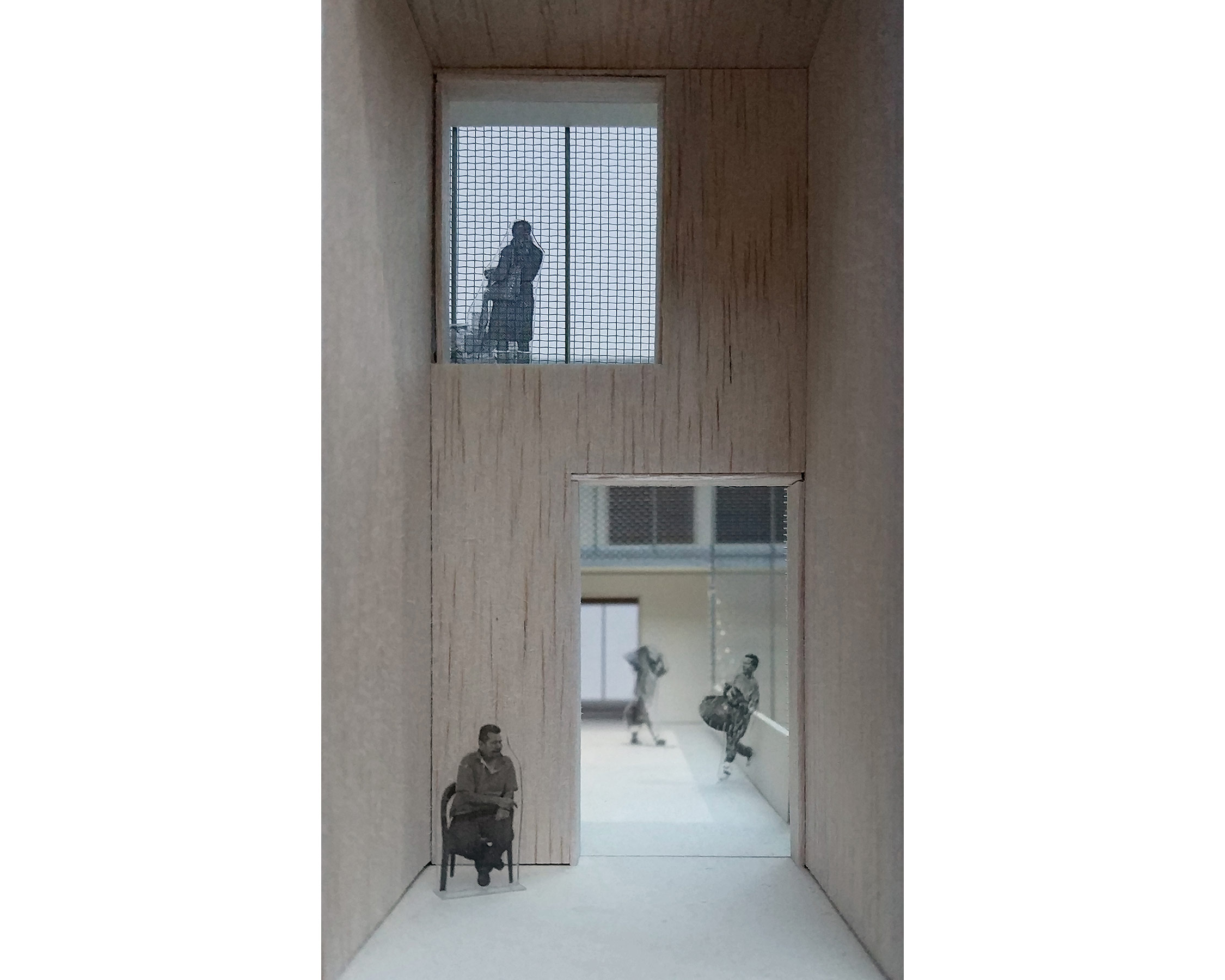The research project developed through detailed analysis of common architectural typologies in Bogotá, enabling a reading of the city through its architecture in order to explore the relationship between public and private realms. Fieldwork was based on a methodology developed by Wajiro Kon, using sketches to catalogue common phenomena. This lead to a reflection on Bogotá’s struggle to address problems of spatial exclusion and inequality in the downtown area.
In response, the proposal uses a simple system of parts in open configurations to modify this relationship. It dissolves abrupt enclosures by thickening thresholds, increasing porosity and interweaving circulation to create sensory co-presence whilst maintaining control over localised points of access.
This followed from identifying the ascetic nature of the retreat, typically encountered as courtyards and atria, and countered this with an architecture of connectivity. These two conditions are woven into a single intervention, articulated as the bridge and the garden.
Against a backdrop of evictions and social exclusion, the project produces a condition of ambiguity that blurs precise thresholds and invites multiple forms of appropriation.
